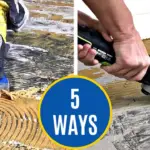Located in the northern foothills of the Tiashan Mountains in Xinjiang, China, the Anjihai Grand Canyon, also known as the Hongsha Grand Canyon or the Red Mountain Grand Canyon, is one of the most captivating natural wonders in the region. Known for its dramatic landscapes, vibrant hues, and geological significance, the Anjihai Grand Canyon stands as a testament to the awe-inspiring forces of nature that have shaped the Earth’s surface over millions of years.

A Geological Marvel: Steep Cliffs and Colorful Rocks
Stretching approximately 300 kilometers in length and reaching depths of up to 400 meters, the Anjihai Grand Canyon is a breathtaking sight that stuns all who witness it. The canyon is composed of steep cliffs, jagged rocks, and strikingly colorful stones, giving it a unique and dramatic appearance. The canyon’s walls are adorned with vibrant reds, oranges, and browns, caused by centuries of geological processes, making it one of the most visually stunning canyons in China.
The rich colors are a result of the erosion of the surrounding landscape. Rivers have flowed across the plains for hundreds of thousands of years, gradually dissolving the soil and rock layers and leaving behind traces of color. The natural elements—wind, water, and time—have combined to create an ever-changing landscape, giving the canyon its distinctive, colorful hues. The vibrant red and orange tones of the rocks, in particular, have earned the canyon its nickname as the Red Mountain Grand Canyon.
Formation of the Canyon: The Power of Water and Time
The formation of the Anjihai Grand Canyon can be traced back to the powerful forces of water erosion. Over thousands of years, rivers have gradually carved their way through the land, cutting into the soft soil and rock layers. As water flows through the canyon, it dissolves and washes away the surface materials, leaving behind traces of color that reveal the canyon’s geological history.
The various layers of sediment visible in the canyon walls tell the story of the land’s ancient past, including the interaction of different environmental forces and the passage of time. These natural processes continue to shape and refine the canyon, making it a dynamic and ever-evolving landscape.

A Photographer’s Dream: Stunning Views and Vibrant Colors
The Anjihai Grand Canyon is a photographer’s paradise, offering some of the most dramatic and vivid landscapes in China. The canyon’s steep cliffs, jagged formations, and the rich array of red, orange, and yellow tones provide a striking contrast against the blue skies, creating visually captivating scenes at every turn.
The interplay of light and shadow throughout the day adds an extra dimension to the landscape, with the canyon’s colors changing with the angle of the sun. Early mornings and late afternoons are especially magical times to visit, as the sun casts long shadows and accentuates the vivid hues of the canyon walls. The breathtaking views of the canyon, with its colorful rock formations and sweeping vistas, have made it a popular destination for travelers, hikers, and nature enthusiasts from around the world.
Ecological Significance: Flora and Fauna of the Canyon
Beyond its geological beauty, the Anjihai Grand Canyon also supports a variety of flora and fauna, making it an important ecological site. Despite the harsh conditions and rugged terrain, the canyon is home to a range of plant and animal species that have adapted to the extreme environment.
The canyon’s diverse vegetation, including drought-resistant shrubs, grasses, and hardy trees, helps stabilize the soil and prevents further erosion. The area is also home to several species of wildlife, including birds of prey and small mammals, which thrive in the canyon’s rugged terrain. The ecosystem of the Anjihai Grand Canyon is a testament to the resilience of life in harsh environments.
Like Us on Facebook!
Tourism and Accessibility: A Hidden Gem in Xinjiang
While not as widely known as some of China’s more famous natural attractions, the Anjihai Grand Canyon is gradually gaining recognition as a must-see destination. Its remote location in the northern foothills of the Tiashan Mountains adds to its allure, making it a perfect spot for adventurers and travelers seeking to explore China’s lesser-known natural wonders.
Subscribe Us on YouTube!
Though the canyon is accessible by road, visitors should be prepared for a rugged journey, as the area is somewhat isolated. However, the journey is well worth the effort, as the canyon’s beauty is unmatched and provides a peaceful escape from the hustle and bustle of urban life. For those who are fortunate enough to visit, the Anjihai Grand Canyon offers a rare opportunity to witness nature at its most raw and unspoiled.
Conclusion: A Treasure of Xinjiang
The Anjihai Grand Canyon is undoubtedly one of the most spectacular natural formations in Xinjiang, China. With its vibrant colors, steep cliffs, and rugged beauty, it is a place that captures the imagination and stirs a sense of awe. Whether you are a nature lover, a photographer, or an adventurer, the Anjihai Grand Canyon offers a chance to connect with the raw beauty of the natural world. It serves as a reminder of the incredible power of water, time, and the elements in shaping the Earth’s landscapes, making it a must-visit destination for anyone seeking to experience one of China’s most extraordinary natural wonders.




















